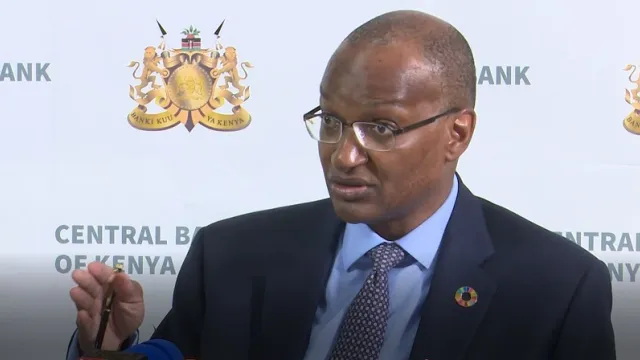When taking a business loan is a heartbeat away from predatory auctioneer

When taking a business loan is a heartbeat away from predatory auctioneer
Banks are giving out smaller loans just enough for their survival knowing too well that small businesses are likely to default and rush to seize the collateral in what seems as predatory lending targeting their clients’ property.
Latest Central Bank of Kenya report shows that lenders have slashed the size of loans advanced to small businesses by half over the last three years.
It also shows that one in four small business are most likely to default on their loans.
The report also shows that lenders are taking collateral of more than 100 per cent the value of the loans.
These three metrics demonstrate that banks are not necessarily concerned about the health of businesses or prosperity of the borrowers but their business models are merely targeting clients’ assets
“Reported collateral values for commercial banks average slightly below 100 per cent of loan amounts, while those for microfinance banks exceed 100 per cent,” CBK noted.
The report shows that lenders obsessed with profits are killing the goose that lays the golden eggs.
Over the past three years, banks have reduced the size of loans going to SMEs to Sh697,000 from Sh1.16 million.
Read also: HUAWEI woos smart office, education users in Kenya with suit of digital tools
This is barely able to meet needs of small businesses such as expansion, scaling up, inventory management and or hiring extra hands.
It is only good for survival, keeping the light bulbs on, the landlord at bay and paying one loan while taking up another.
Part of this problem, the CBK blames on the ubiquitous rise of mobile money, which has entered into mainstream banks.
The regulator said the push by banks and micro lenders to offer mobile loans had increased the number of loan accounts owned by small businesses but had cut the value of loans being offered.
Banks have been boasting how they have shifted customers to digital channels with Equity Bank transacting Kes 547 billion on Eazzy App and Equitel while KCB saw Kes 655 billion worth of mobile transactions in the first quarter.
“Overall, the average loan size across all categories as at December 2020 stood at approximately Kes 697,500 compared to Kes 1.16 million in the 2017 survey,” CBK said.
“A possible contributing factor is the growth in mobile-based and digital credit disbursement channels between 2017 and 2020. These channels made it possible for institutions to extend low-value loans to a wider client base than was earlier the case with traditional service channels,” the regulator said.
CBK is also guilty of promoting miniscule loans when it came up with Stawi, leveraging credit scoring based on data and Credit Reference Bureaus to enable banks make instant lending decisions to MSMEs.
Read also: SMEs default on Sh98 billion loans
The loan product, through NCBA along with Cooperative Bank of Kenya Limited, Diamond Trust Bank Kenya Limited (DTB), and KCB was touted as a game changer, offering quick annualised mobile loans for only 9 per cent interest rate.
The product was to target businesses with a turnover of between Kes 50,000 and Kes 250,000 and would assess borrowers on the strength of past records and available assets to give small businesses much needed cash flow.
The product would give customers access to loans of between Sh30,000 and Kes 250,000 payable in upto 12 months.
Mobile based lending has unlocked cash to businesses and individual pockets. However, the money is usually short term, high interest and in small proportions, making it unsuitable for investment in businesses.
The result has been massive defaults, of the 915,115 MSMEs loan accounts in the banking industry as at December 2020, a total of 204,802 accounts valued at Kes 98.7 billion were classified as non-performing.
This high rate of default has morphed into a feedback loop that has led to loan denials of all SME loans by microfinance banks.
CBK study showed that banks turned away 28 per cent of small businesses while microfinance declined 96 per cent of the loan applications made to them.
Kenyans are hardworking and will put even the smallest cents into a business.
According to FinAccess Digital Credit Tracker Survey 2017 despite the small size of the loans, most digital loans go to business at 37 per cent, an equal number of up to 35 per cent are used to cover day to day needs.
While 21 per cent goes towards education, 15 per cent is used to buy airtime and 7 per are taken up by medical emergencies.
However, in the long run digital loans may cause more harm and good especially as it moves mainstream.



